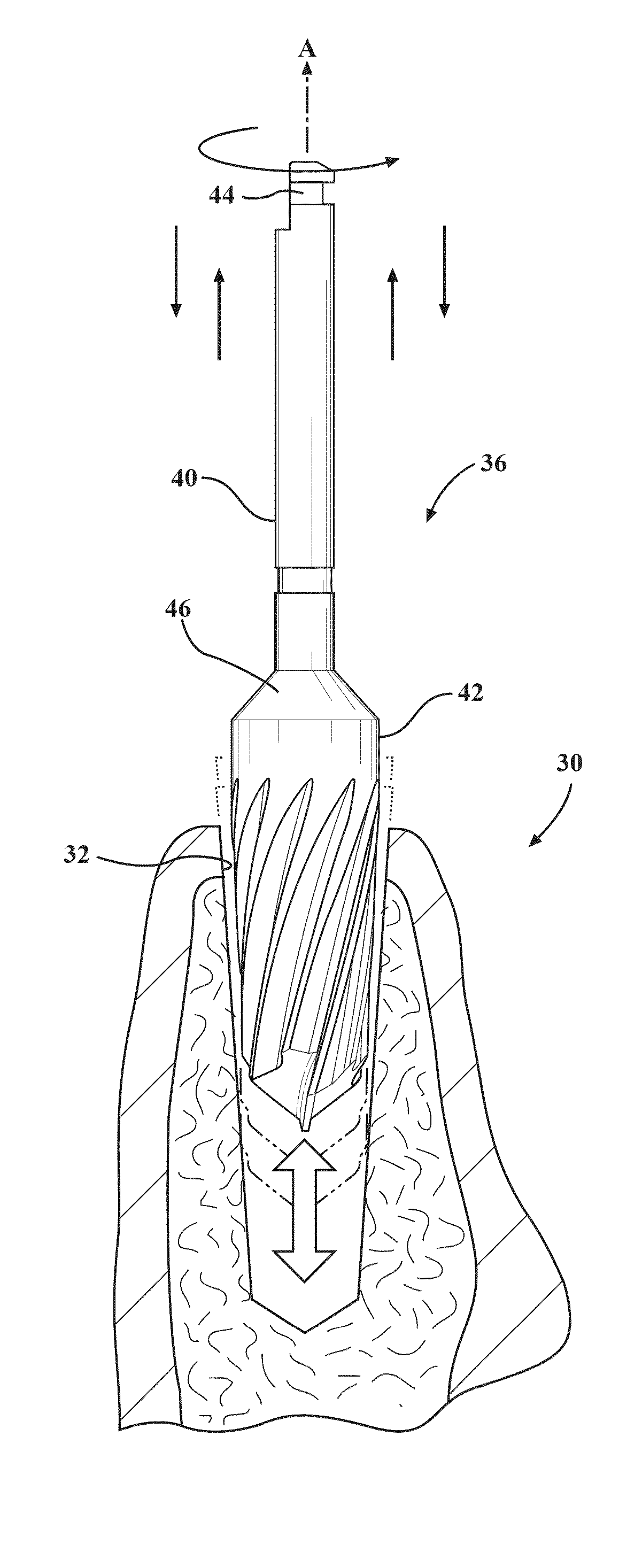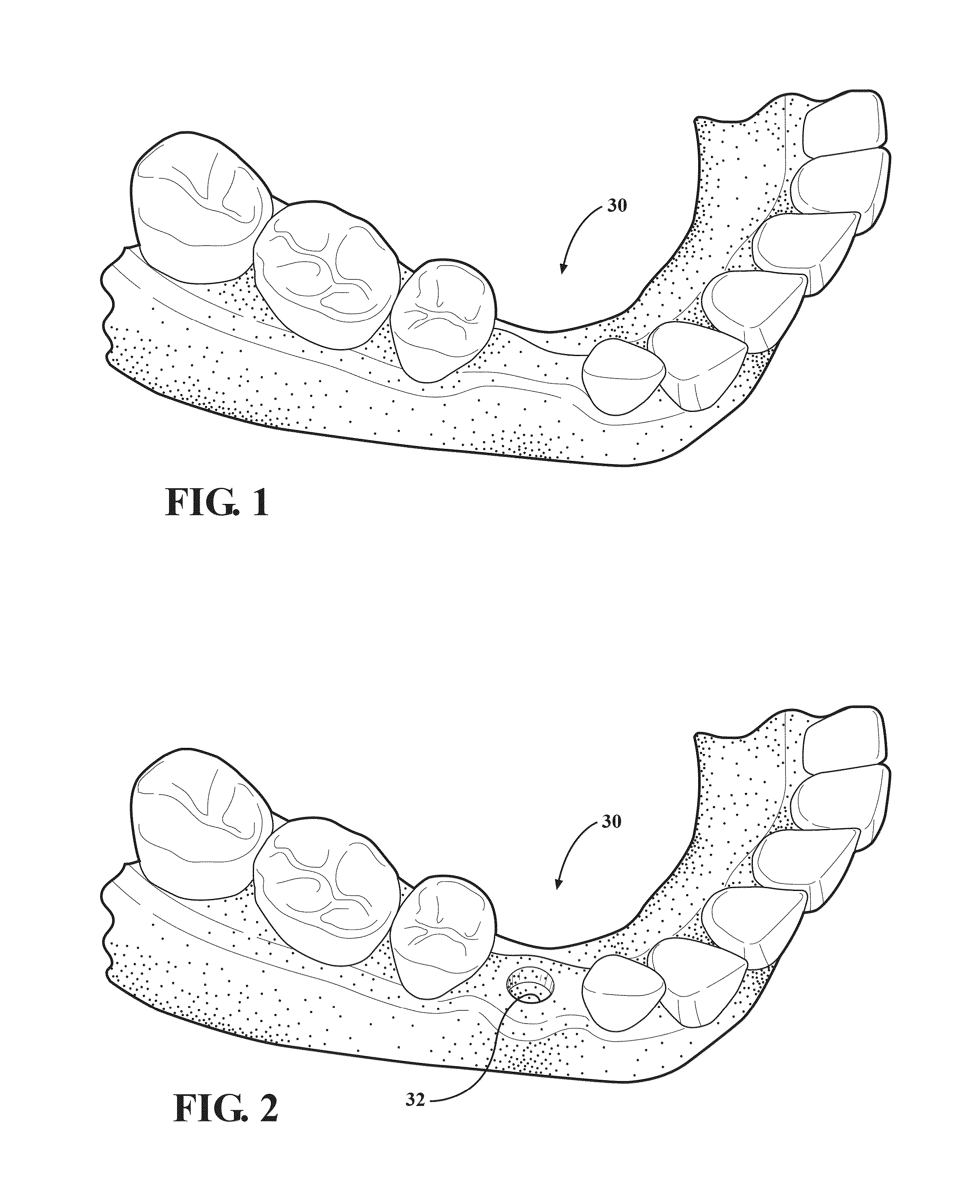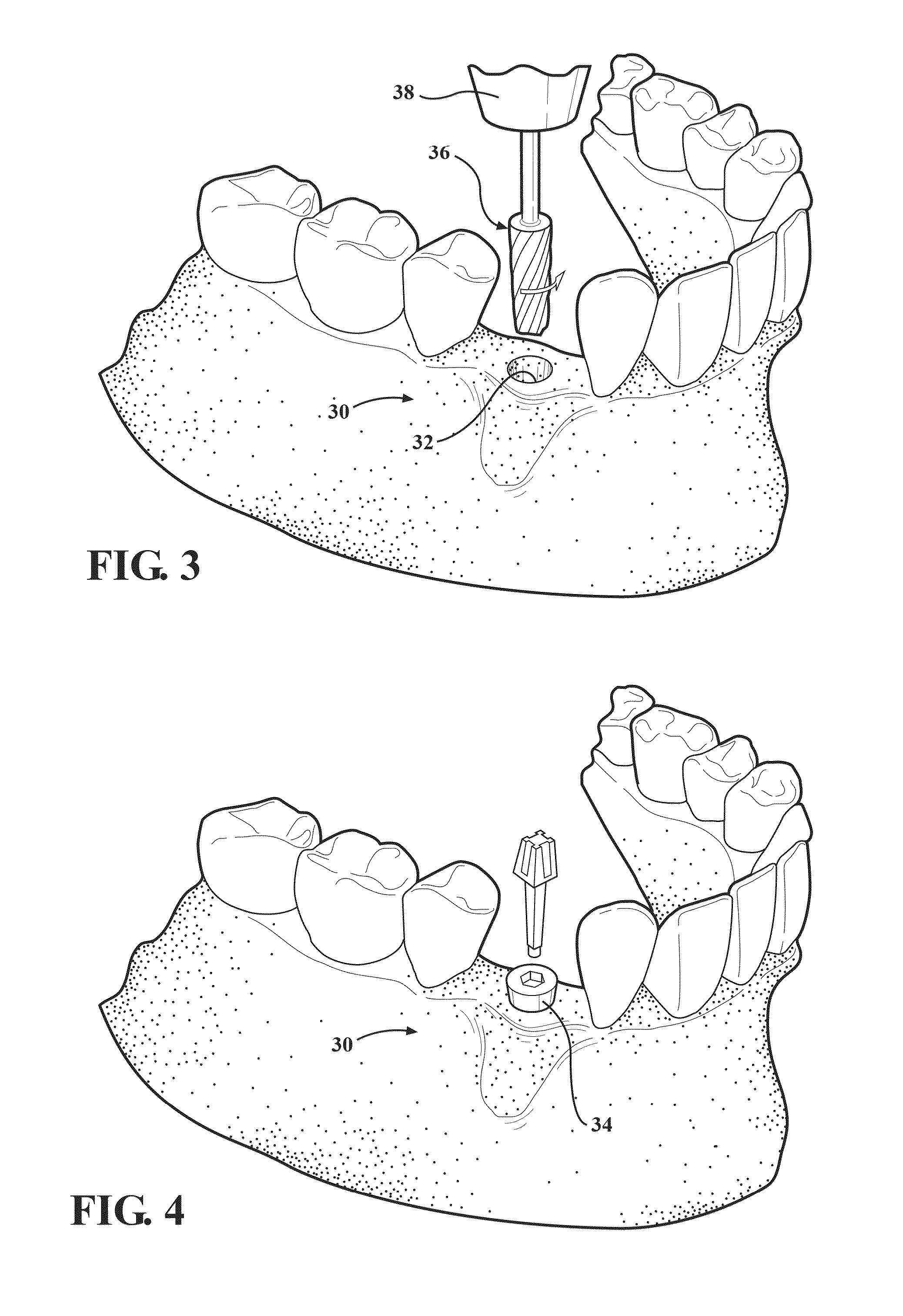Autografting osteotome
a technology of osteotomy and autograft, which is applied in the field of tools, can solve the problems of limiting the treatment of mandibular sites, affecting the osseointegration of the bone, and the location of the bone may be wholly unsuitable for the violent impact of the osteotomy, so as to promote osseointegration and expand the osteotomy
- Summary
- Abstract
- Description
- Claims
- Application Information
AI Technical Summary
Benefits of technology
Problems solved by technology
Method used
Image
Examples
example
[0085]The mechanical tests were conducted with a surgical drill motor 38 and materials testing machine to control the rotary speed and depth penetration rate while measuring force and torque during drilling / burnishing procedures in bone. In other words, the manual influence of a surgeon was not involved in the following test report. The procedures using a prior art burr drill, fluted osteotome 36 in “Burnishing Mode” (Burnishing Osteotome), and fluted osteotome 36 in “Drilling Mode” (Osteotome Drill) were compared for insertion and removal torque of a 3.8 mm or 6.0 mm implant 34. Heat generation was measured during the drilling procedure by inserting a thermocouple into the bone, 1 mm away from the edge of the hole. Procedures included, drilling (900 RPM) without irrigation and burnishing (200, 400, 600, 900, and 1100 RPM), with and without irrigation. The implant 34 stability was also measured with the Osstell resonance frequency analysis system. The morphology of bone around the h...
PUM
 Login to View More
Login to View More Abstract
Description
Claims
Application Information
 Login to View More
Login to View More - R&D
- Intellectual Property
- Life Sciences
- Materials
- Tech Scout
- Unparalleled Data Quality
- Higher Quality Content
- 60% Fewer Hallucinations
Browse by: Latest US Patents, China's latest patents, Technical Efficacy Thesaurus, Application Domain, Technology Topic, Popular Technical Reports.
© 2025 PatSnap. All rights reserved.Legal|Privacy policy|Modern Slavery Act Transparency Statement|Sitemap|About US| Contact US: help@patsnap.com



